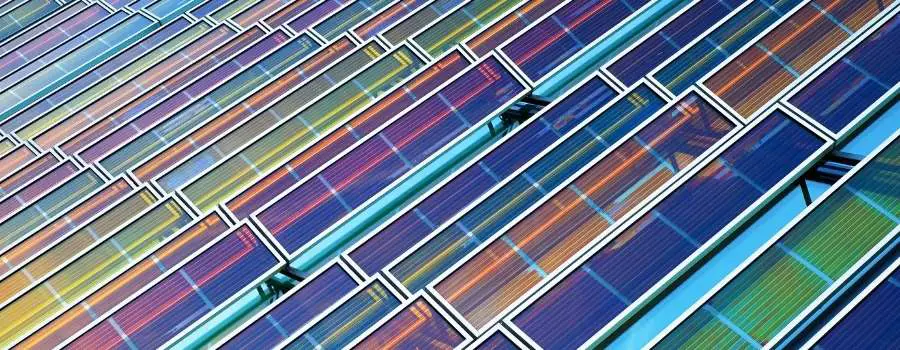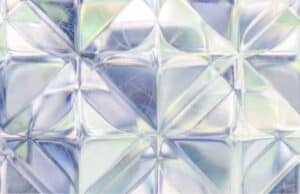
While the vast majority of solar panels come in black or very dark blue (and sometimes dark green,) you might be surprised to learn that colorful solar panels are starting to gain some traction in popularity.
Solar panels typically come in black, dark blue, or dark green, but companies such as Kameleon and Sunovation are developing solar panels in other colors including solid color, patterned, and metallic shades.
For instance, Sunovation offers a variety of colors for their solar panels including blue, black, red, silver, and gold. Kameleon is even more exotic with 16 different color options from which you can choose.
Colorful solar panels are a great way to spruce up your property and also help you stand out from the rest of the neighborhood when going green.
When installing these types of solar panel devices it’s important that they’re mounted at an angle that will allow them to catch more sunlight and also be able to show off their colorful style.
Do Color Solar Panels Cost More?
Color solar panels are a bit of a luxury so they tend to cost more. You can expect to pay about $14.00 more per panel to get your solar panels in a color other than black or dark blue, but these prices can vary depending on the size of the solar panel.
The cost of color solar panels varies depending on the type and amount of colors, but typically they are priced at a premium.
A 35-watt Sunovation color panel will set you back around $595 while their solid-colored carbon fiber option is priced at only $435.
Kameleon offers some color options for less money with their 25-watt panels available in black, blue, red, or purple for $409.
Luckily the price of solar panels has been decreasing steadily in recent years, and so while color solar panels may cost more upfront than their monochrome counterparts, they can be an excellent investment.
Do Color Solar Panels Work As Well As Regular Solar Panels?
Color solar panels tend to have an efficiency that is 15% less than traditional black or dark blue panels. This means that if you have an installation with a 300W capacity, you’ll only be able to use 270 Watts worth of power from your colored panel instead of 300 Watts.
Choosing color solar panels is definitely a decision that shouldn’t be taken lightly. You have to decide if losing some efficiency is worth the aesthetics gained.
What Are The Advantages Of Color Solar Panels?
- As technology continues to develop, it’s nice to see new options and aesthetics in solar panels for your home and businesses. Every piece of solar technology has good and bad. First, let’s look at some advantages:
- Colorful installations look more attractive and welcoming to the eye than black or dark blue panel installations.
- A colored installation can be an excellent way to make your home stand out from others in your neighborhood.
- Color solar panels can be a great conversation starter.
- Since darker colors absorb heat, choosing a lighter color solar panel may help keep your home cooler on extremely hot days.
It is important to remember that a color installation will not always have the same benefits as its monochrome counterpart.
If you’re looking for energy efficiency, it’s best to stick with black or dark blue solar panels. But if you want your home to stand out from others nearby or you want a conversation starter, color solar panels might be the best option for your home.
What Are The Disadvantages Of Color Solar Panels?
While color solar panels are an excellent option for putting your home on the map, they do have a few disadvantages:
- Color is not ideal if you live in an area with heavy snow or rain because it can be reflected off of the surface and decrease efficiency levels by up to 15%. Keep this in mind when choosing colors like white or blue.
- Color panels are not as efficient as black or dark blue. If you want to maximize your energy production, it’s best to choose monochrome solar panels that will allow for the most sunlight absorption and utilization.
Besides Blue Or Black, What Are The Most Popular Colors Of Solar Panels?
White and green solar panels are the most popular color choices besides the traditional black or dark blue.
White solar panels are a popular choice for businesses since they offer an unobtrusive look that matches the exterior color scheme of the building.
Green solar panels, on the other hand, might be best for people who live in heavily-tree covered areas since they blend into their surroundings a little bit better than white or black roofs.
Do Clear Solar Panels Exist?
Clear solar panels, also known as photovoltaic glass, are less common than white or dark blue ones because they’re more expensive to produce and install and carry an efficiency of only 5% vs black solar panels which are about 23% efficient.

Photovoltaic glass can be used in solar panels, but engineers are more focused on using it for solar windows.
Clear solar panels would be an excellent option for those that don’t like the aesthetics of traditional solar panels. There are still a few glaring disadvantages though:
- An efficiency that’s 4-5 times LESS than traditional black solar panels.
- Even if the solar panels are clear, the rail system likely wouldn’t be which could lead to an even more awkward look.
- If the solar panels are clear then any blemish (scratches, dirt, grime) that shows up will be extremely obvious.
- Some communities might have HOA restrictions and only allow solar panels that are black or dark blue.
- The price per panel is immense…roughly $1400 MORE than a standard solar panel.
Final Thoughts
Solar technology is coming along at a great clip. As demand grows, more aesthetic options are coming into reality.
For many, some loss in efficiency is worth the aesthetics gained and it might be a good idea to consider color when you are choosing your solar panel installation. But for many more, traditional black or dark blue solar panels are the best choices thanks to their higher efficiency, lower cost, and more availability.
